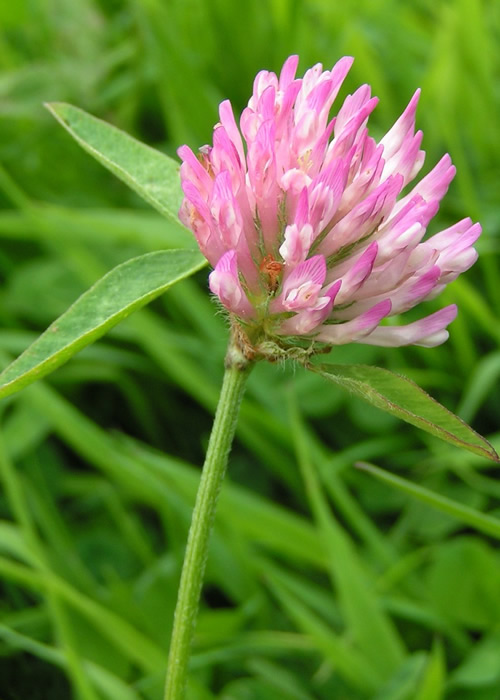
New research has revealed a range of benefits from using red clover as an alternative silage crop to grass, including cost and productivity gains.
Investigations into red clover silage have been carried out over recent years by The Institute of Biological, Environmental and Rural Sciences (IBERS) – a member of the new Silage Advisory Centre created to promote the benefits of baled silage as a modern grassland and forage management tool.
Now, the results are being shared in a series of factsheets available at www.silageadvice.com in an effort to encourage farmers to consider alternatives to grass when ensiling forage. Benefits detailed in the factsheets include:
Benefit one: cost savings in fertiliser and supplements
• Red clover provides a source of affordable home grown protein, offering between 14 and 20% crude protein – quality and quantity being better than grass.
• The cost saving per ha/annum of a red clover silage sward - compared to a perennial ryegrass sward with 200kg of N fertilizer applied - is in the region of £103, with no reduction in forage yield.
• Dairy farmers currently applying 200kg N/ha/year in fertilizer could be able to drastically reduce their nitrogen applications without a reduction in forage yield if they put white and red clover in their grazing and silage leys respectively.
Benefit two: intake and yield improvements
• Study 1: grass and red clover silages were prepared in big bales and fed to dairy cattle as 100% grass, 100% red clover and as a 50:50 mix on a dry matter basis. The 50:50 mix resulted in a yield 3.7 kg/day higher than a grass only silage diet, and an intake of just 1kg DM/cow/day higher than grass alone.
• Study 2: in a comparison of a 50:50 mixture of red clover and grass silage with grass silage alone, milk yields were significantly higher on red clover silage compared to grass alone - yet the 50:50 mix gave the most economical feed conversion results, showing little loss in milk yield for a reduced forage intake.
• Study 3: in a comparison of red clover and maize silages – mixed in proportions of 40:60 or 25:75 respectively – with grass silage alone:
o a 25:75 red clover silage/maize silage mixed forage at 17.2kg of DM intake/day produced 27.7kg raw milk/day
o a 40: 60 red clover silage/maize silage mixed forage at 18.1kg of DM intake/day produced 25.7kg raw milk/day
o grass silage alone at 11.8kg of DM intake/day produced 20.2kg raw milk/day.
Benefit three: forage yield and soil improvements
• Red clover is traditionally high yielding as a silage crop at 13t DM/ha/year, equivalent to Italian/hybrid ryegrass with 250 units of nitrogen/acre.
• The crop provides benefits in rotational systems, with the enhanced soil fertility resulting from clover making other crops in a rotation more profitable.
• Farmers benefit from a wider harvesting window than that provided by grass, as quality in terms of digestibility does not drop as rapidly as grass once the crop has flowered.
Benefit four: flexible feeding options
Baling red clover silage can provide advantages for the majority of farms which have lower percentages of red clover than grass.
"If clover is ensiled in large clamps with grass silage it gets ’lost’ and can’t be fed out accurately at the optimal nutritional requirements over the winter period," said Dave Davies, Silage Researcher and Agricultural Outreach Manager at IBERS. "Bales enable accurate inclusion in the feed and they can also be easily identified, accessed and quantified so that the play-off between silage yield and optimum nutrition can be adjusted for the entire winter feeding regime."
One of the factsheets in the series includes advice on cutting and baling of red clover. Tips include:
• cutting when the crop is in mid-bloom with a mower set high enough to avoid soil contamination - between 2.5 and 3.5 inches, depending on ground conditions
• leaving the crop in as wide a swath as possible to speed up the rate of wilting
• wilting for a maximum of 48 hours with minimal mechanical movement to avoid leaf shatter and loss (which can reduce the protein quality of the silage)
• ensiling with an inoculant containing homo-fermentative lactic acid bacteria to promote a rapid and successful fermentation and help to improve the protein content of the silage.
• wrapping bales with six layers of quality film to reduce the risk of ’stalky’ material penetrating through the wrap which allows oxygen to enter and damage the silage.
